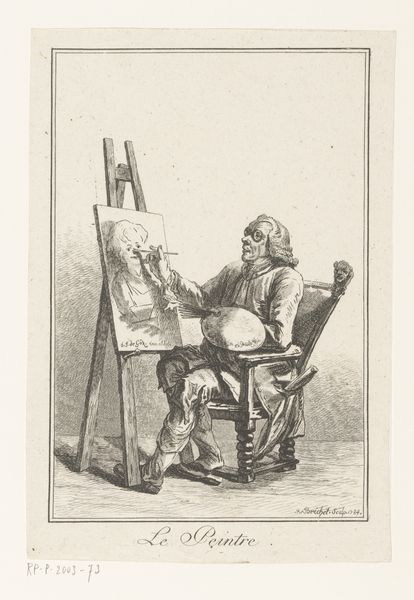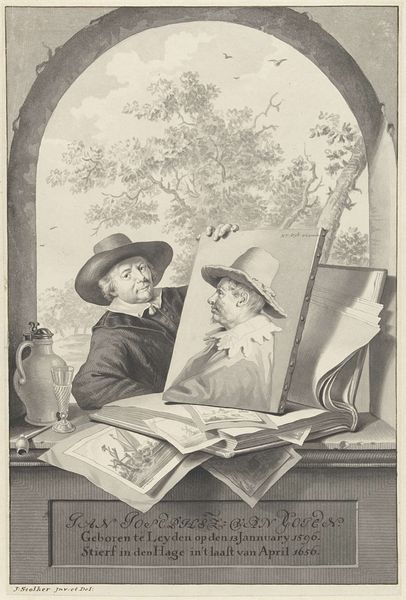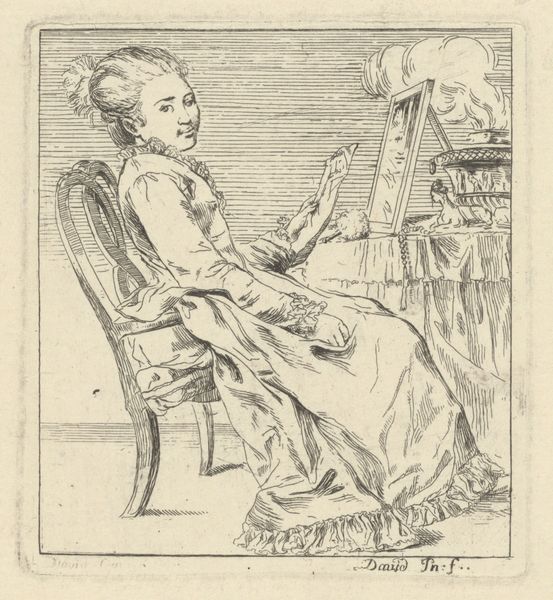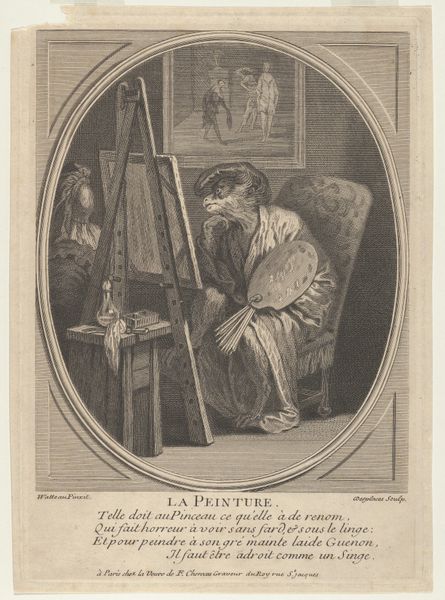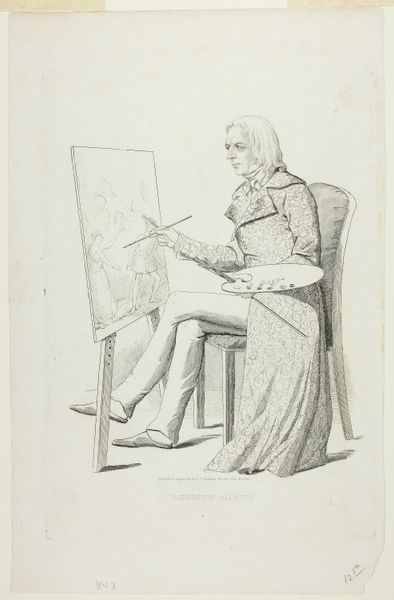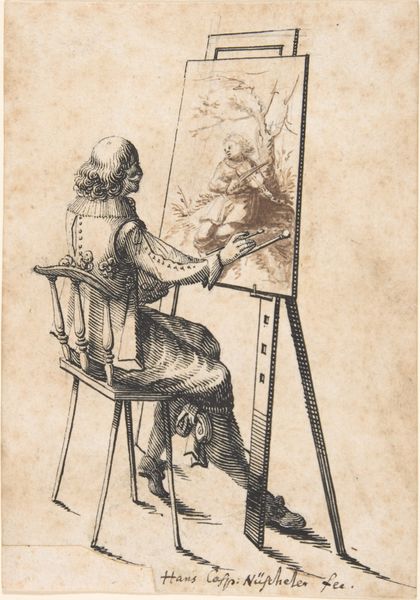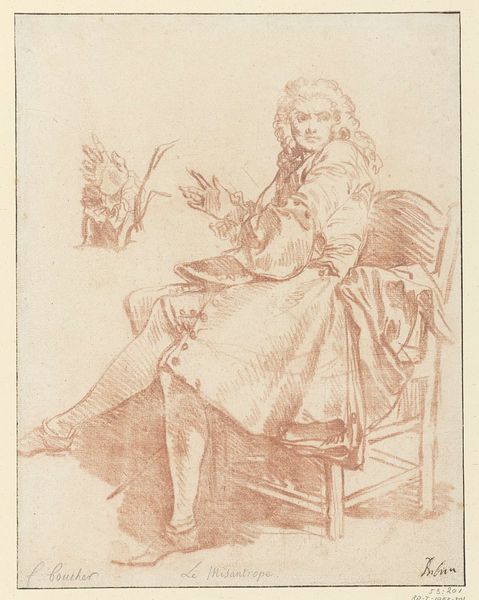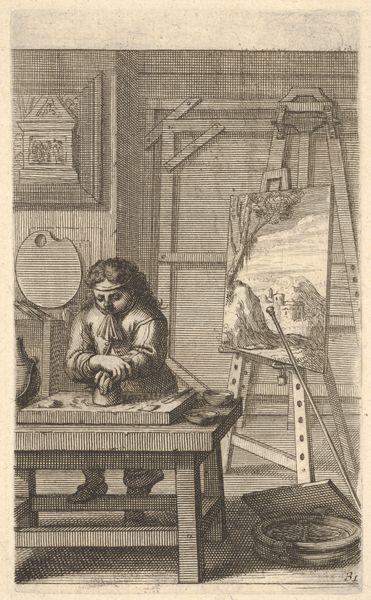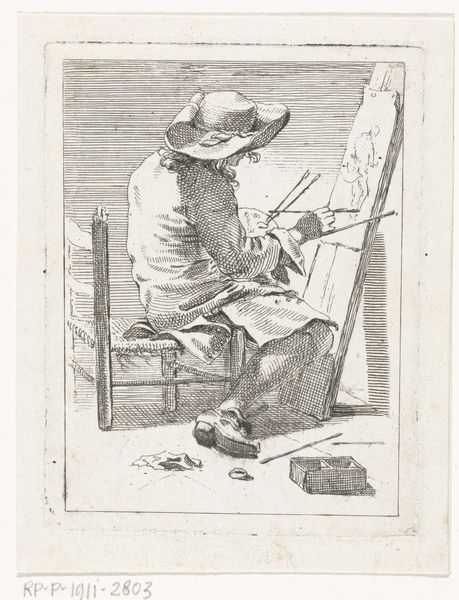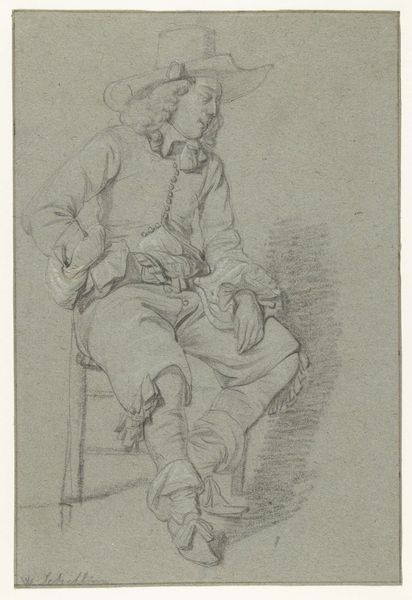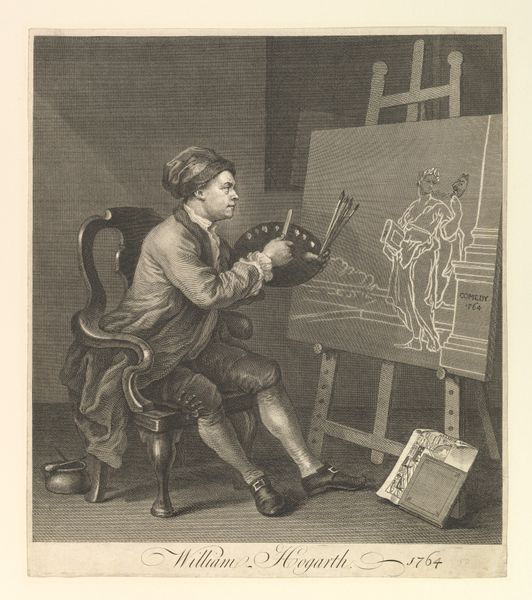
drawing, print, engraving
#
portrait
#
drawing
#
self-portrait
#
baroque
# print
#
old engraving style
#
men
#
portrait drawing
#
engraving
Dimensions: Sheet (trimmed): 8 7/16 × 5 1/2 in. (21.4 × 14 cm)
Copyright: Public Domain
This engraving, "Painter at an Easel," by Michel Lasne, presents us with a tableau vivant of artistic creation. At its heart lies the prominent depiction of Cupid, the god of love, wielding his bow. Cupid's presence here is no mere aesthetic choice. This motif stretches back to antiquity, where Eros, his Greek counterpart, embodied primal desire and generative force. We see echoes of this in Renaissance art, where Cupid often signifies divine love or the allegorical depiction of the human soul. Yet, consider the evolution of this symbol across time. In some iterations, Cupid becomes a symbol of frivolousness or mere sentimentality. The artist’s choice to feature this winged figure, then, engages a deep-seated emotional understanding of love's power. Such images tap into our collective memory, evoking a profound sense of connection to the timeless human experience of desire and affection. This symbolic representation suggests a cyclical return to fundamental emotions and the power they hold over human creativity.
Comments
No comments
Be the first to comment and join the conversation on the ultimate creative platform.
